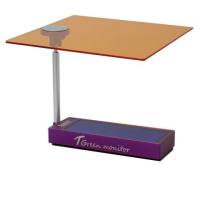A Cell-Cell Fusion Assay to Monitor HIV-1 Env Interactions with Chemokine Receptors
互联网
581
Biological membrane fusion is an important part of many cellular processes and is a critical step in the entry of enveloped viruses, such as HIV-1, into cells. For HIV-1 to infect cells, the virus must bind to the cell surface, after which the viral Env protein must be triggered to undergo a conformational change that mediates membrane fusion. Cell-surface binding has long been known to occur via a high-affinity interaction between Env and CD4. However, the cell-surface molecules responsible for triggering the fusion-inducing conformational change in the Env protein have been only recently identified, permitting the study of HIV-1 Env-mediated membrane fusion in much greater detail (for review, see 1 ). These molecules, termed coreceptors, have been shown to be members of the nine-transmembrane domain receptor family. The most important HIV-1 coreceptors are the chemokine receptors CCR5 and CXCR4 (2 –7 ), although at least nine other chemokine receptors or orphan receptors have been shown to support cellular entry for subsets of HIV-1 or SIV strains (3 ,5 ,8–11 ). The ability of a given virus strain to utilize particular chemokine receptors is a major determinant of cellular tropism. Thus, it is desirable to identify the receptors used by virus strains in a rapid, quantitative, and reproducible manner.









